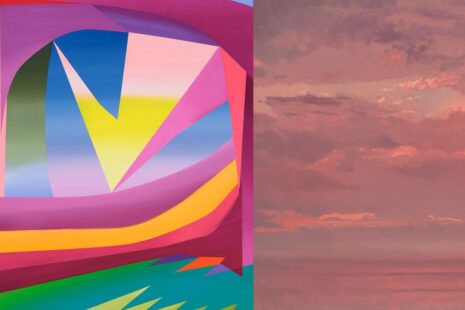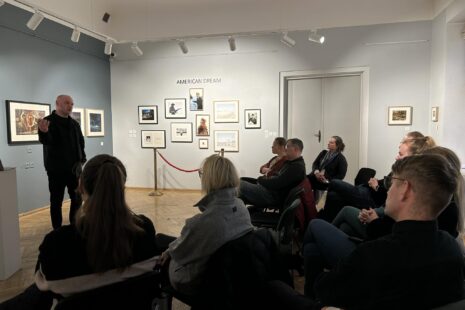Text by Gytis Dovydaitis
We are facing a revolution. Manuel Castells in his “The Rise of Network Society” showed us that there’s no point to be humble here: everything is connected, information is liberated, both financial and human capital flows freely, national borders are becoming anachronistic, cheap technology democratizes artistic practices releasing huge creative potential, and finally, “for the first time in history, the human mind is a direct productive force, not just a decisive element of the production system“1.
After conducting a cultural analysis on postmodernity Frederic Jameson came up to conclusion that “Capitalism is at one and the same time the best thing that has ever happened to the human race, and the worst”2, and although from first glance the idea of “free market” imposes freedom, the hegemonic apparatus puts all its’ effort into building rigid walls. Ideology is dangerous the most when it comes as a Leviathan in sheep’s clothing. Our age of freedom is marked by oligopolistic ownership of communicational services and information generated within them. Here the flow of ideas is inhibited by multiple devices: advertisement-driven content suggestion algorithms, hyperproduction of information, confirmation bias, the social bubble effect, ideologic censorship or societal taboos to name a few. There are so many walls that it’s nothing else but a labyrinth. While nothing holds you from experiencing the world from a different perspective or creatively collaborating with people from other fields and backgrounds, both the system and you yourself are doing their best at keeping the status quo.
Various healing procedures had been attempted: from political, to economic, to cultural, with effects ranging from unnoticeable to vague. Democracy is facing the crisis of legitimation, cultural identities are in schizoid flux, and art seems to flip into creative industries by following the same capitalistic imperative as any other field of production, thus banality and similitude prevail. Obviously, our method is wrong. Obviously, something fundamental has to change. And obviously, if we want to discover fresh approaches a disruptive mean of innovation is needed.
Art stands out here as “in essence, a dissident movement”3, its’ capacity to pack tons of information into simple symbolic imagery, its’ ability to escape language barriers, its’ power to generate compelling affects renders it as an efficient tool of kindling innovation on international level and breaking the walls that stand in our way. The Baltic and Nordic region is highlighted by unique
cultural history and strong educational institutions which keep themselves relevant via regular organizational renovations, thus this is a territory boiling with potential for highly sophisticated and innovative artistic practices which are ready to be uncovered.
As McLuhan had once said, “To prevent undue wreckage in society, the artist tends now to move from the ivory tower to the control tower of society”4, but specific sociocultural conditions we are facing means that only a person born within this environment can adequately interpret it, manipulate it, and come up with new intensities. It’s high time when youth should march to front rows and reject the hegemony with the explosive energy they possess. Baudrillard noted that “The most powerful instinct of human kind is to enter into conflict with truth and therefore with reality”5, and it’s the ever so progressive youth who is most capable of doing that. BNYAA is on a mission to release the energy contained within young artists to catalyze their development, to promote international collaboration, eventually revealing new aesthetic practices which might save us from the fall to banality and show us the way to tomorrow in times when that is needed more than anything else. Let’s break the walls: the wall of conventions, the wall of fear, the wall of social bubble, the wall of national identity, with the art of youth being the dynamite making it all possible, finally propelling our ship into the land of future.
Literature:
1. Castells, M., “The Rise of Network Society”, Blackwell Publishing Ltd., 2000, p. 31
2. Jameson, F., “Postmodernism, or the Cultural Logic of Late Capitalism”, Duke University Press, 1991, p. 47
3. Walsh, D., “Politics of Person as the Politics of Being”, University of Notre Dame Press, 2015, p. 164
4. McLuhan, M., “Understanding Media”, The MIT Press, 1994, p. 77
5. Baudrillard, J., “The Conspiracy of Art”, Semiotext(e), 2005, p. 162









